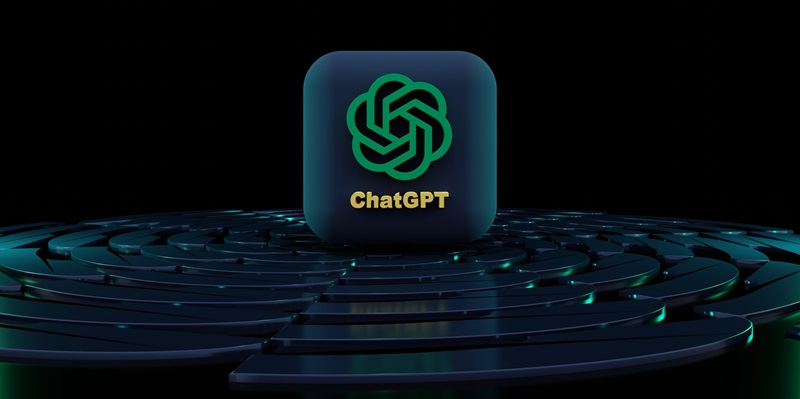In the ever-evolving landscape of cybersecurity, finding effective and efficient ways to combat malware threats is crucial. Enter GPT (Generative Pre-trained Transformer), a revolutionary language model developed by OpenAI that has garnered significant attention for its capabilities in various domains. This article explores the potential use of GPT in malware analysis, presenting insights on how security analysts can enhance its abilities. Additionally, we delve into the challenges faced by GPT in this context, shedding light on its oddly human-like obstacles.
Enhancing GPT’s ability in malware analysis
Security analysts have been searching for innovative solutions to improve malware analysis processes, and recent research conducted by cybersecurity experts at CheckPoint suggests that GPT can be utilized for this purpose. By leveraging ChatGPT, a variant of GPT specifically designed for dialogue, security analysts can enhance GPT’s ability to analyze and detect malware. This augmentation involves fine-tuning the model with malware-related data, allowing it to make more accurate predictions and uncover hidden threats.
Limitations of GPT in recalling answers
Despite its impressive capabilities, GPT exhibits limitations when it comes to recalling answers that may seem expected or are present in its internal cheat sheet. These limitations present challenges in malware analysis, where accurate recall of information is crucial for effectively identifying, analyzing, and neutralizing malware threats. The development of methods to mitigate this limitation becomes critical in unleashing GPT’s full potential as a malware analysis tool.
GPT’s strengths lie in summarizing and understanding grammar
One area where GPT shines in malware analysis is its ability to summarize large inputs, showcasing its profound understanding of text structure and grammar. By distilling lengthy reports, research papers, or even malicious code into concise and informative summaries, GPT streamlines the process of identifying key facts and patterns. This strength empowers security analysts with comprehensive overviews that facilitate more efficient analysis and quick decision-making.
Human-like challenges in malware analysis with GPT
Applying GPT to malware analysis reveals intriguingly human-like challenges. The model encounters difficulties in comprehending ambiguous or context-dependent statements, making it susceptible to misunderstandings and potentially offering inaccurate analyses. These challenges underscore the importance of human expertise and the need for researchers to address GPT’s vulnerabilities to advance its effectiveness in detecting and analyzing malware.
Memory window drift in GPT
GPT breaks texts into tokens, segments, or chunks with a fixed window size. While this approach aids in processing large amounts of information, it introduces the concept of “memory window drift.” As GPT reads and processes texts in chunks, the model may lose crucial context or relevant details that fall outside its limited memory window. This phenomenon poses challenges in accurately comprehending and analyzing complete malware-related texts, calling for innovative solutions to mitigate this limitation.
Gap between knowledge and action
Renowned physicist Richard Feynman expressed criticism towards memorization without understanding, emphasizing the importance of comprehending concepts rather than merely recalling information. A parallel can be drawn between Feynman’s critique and the challenges GPT faces in malware analysis. Although GPT displays an impressive ability to mimic human language comprehension, its lack of true understanding presents obstacles in effectively applying its knowledge to identify and neutralize malware threats.
The Logical Reasoning Ceiling in GPT
Effective malware analysis requires robust logical reasoning abilities, which pose a challenge for GPT. While the model can mimic logical reasoning to a certain extent, managing its capacity for logical inference becomes crucial when handling complex malware-related scenarios. Researchers found that GPT’s logical reasoning capacity often reaches a limit, hindering its ability to provide accurate and reliable analyses. Overcoming this limit remains an area of focus for improving GPT’s performance in malware analysis.
Detachment from expertise in GPT
One of GPT’s remarkable capabilities is its implicit web-weaving ability, evident through its sentence completion feature. This power enables GPT to generate coherent and contextually relevant text. However, solely relying on this ability may detach GPT from true expertise, making its output quality suffer if reason alone is forced into the analysis process. Striking the right balance between web-weaving and expert knowledge becomes imperative to leverage GPT effectively in malware analysis.
Goal orientation issues in GPT
In tests conducted with GPT, it was observed that the model often provides theoretically perfect advice but fails to consider practical constraints. This goal-oriented issue poses challenges in the context of malware analysis, where applied solutions must consider real-world limitations and constraints. Further research is needed to enhance GPT’s ability to generate practical and actionable recommendations, aligning them with the pragmatic requirements of security analysts combating malware threats.
Spatial blindness in GPT
One of the unique attributes of GPT that researchers observed during malware analysis testing is its spatial blindness. GPT heavily relies on precisely configured prompts to yield effective Google searches for information retrieval. This emphasizes the importance of supplying GPT with context-specific instructions to achieve the desired outcomes in malware analysis. Researchers must understand and address this distinct nature of GPT to optimize its performance in detecting and analyzing malware.
The potential of GPT in malware analysis is immense, offering promising opportunities to enhance security analysts’ capabilities in combating cyber threats. However, significant challenges hinder its seamless integration into the field. Understanding and addressing GPT’s limitations, such as recall issues, logical reasoning capacity, and detachment from expertise, are crucial steps towards leveraging its full potential in malware analysis. Researchers, practitioners, and developers must continue exploring and refining GPT’s application, working collaboratively to bridge the gap between human expertise and transformative AI technologies in the realm of cybersecurity. Only then can GPT truly emerge as a powerful ally in the ongoing battle against malware.

